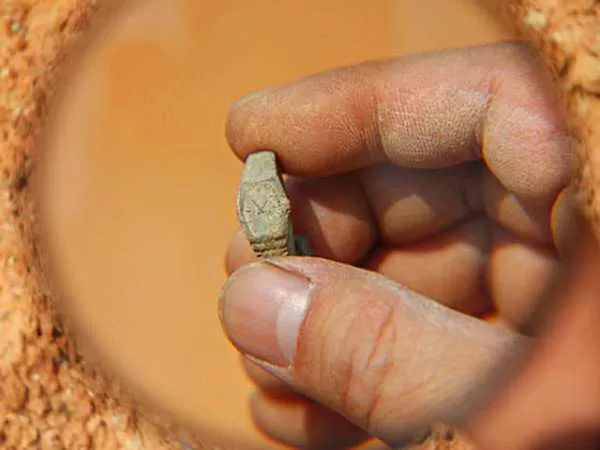Ancient Chinese Tomb Yields Century-Old Swiss Watch
Some mysteries remain unsolved, captivating our imagination and challenging our understanding of history. One such enigma surfaced recently with the discovery of a century-old Swiss watch in an ancient Chinese tomb sealed for over 400 years. This perplexing find raises more questions than answers and has left archaeologists baffled.
The Astonishing Discovery
The discovery took place in Shangsi, southern China, where archaeologists unearthed a miniature watch shaped like a ring from a Ming Dynasty tomb. This tomb, believed to have been sealed since the occupant’s funeral in the 15th or 16th century, offered a surprise that no one could have anticipated. The watch, encrusted in mud and rock, had stopped at 10:06 am and bore the engraving “Swiss” on its back.
The Ming Dynasty Context
The Ming Dynasty, known for its rich cultural and technological advancements, had its unique era of watchmaking. However, the presence of the word “Swiss” engraved in English on the watch adds an intriguing twist. During the Ming Dynasty, Geneva, Switzerland, had not yet established a global reputation for watchmaking. Moreover, in 1541, Geneva imposed a ban on flashy jewelry, making the idea of a practical yet essential ring-watch conceivable. Despite this, there is no record of ring-watches being popular in Europe until after 1780.
Unraveling the Mystery
The discovery raises several questions: How did the watch end up in the ancient tomb? Was it planted there, and if so, by whom and for what purpose? The known facts do little to shed light on these questions. The Ming Dynasty’s watchmaking traditions do not explain the presence of an English-engraved Swiss watch in a Chinese tomb.
A Suspenseful Discovery
The archaeologists made the puzzling discovery while filming a documentary with two journalists. The unexpected find led to the suspension of the dig, as researchers await the arrival of experts from Beijing to help unravel this unsettling mystery.
Theories and Speculations
Several theories have emerged to explain this perplexing find. Some suggest that the watch could have been planted by a modern intruder, but the motive behind such an act remains unclear. Others speculate about the possibility of time travel, though this idea borders on science fiction rather than historical fact.
Time Travel Theory
One of the more fantastical theories proposes that the watch is evidence of time travel. Proponents of this idea argue that the watch’s presence in a tomb sealed for centuries indicates that someone from the future might have inadvertently left it behind. While this theory captures the imagination, it lacks empirical support and remains purely speculative.
Modern Intruder Theory
A more plausible theory suggests that the watch was planted by a modern intruder who somehow gained access to the tomb. However, this raises further questions: How did the intruder enter the sealed tomb without leaving any trace? What was their motive for placing a watch in an ancient burial site? This theory, while possible, does not provide a satisfactory explanation for the mystery.
Awaiting Expert Analysis
As researchers await the arrival of experts from Beijing, the archaeological community is abuzz with speculation and curiosity. The experts will conduct a thorough analysis of the watch and the tomb to uncover any potential clues that might explain this anomaly.
The Historical Significance
This discovery has significant implications for our understanding of both Ming Dynasty China and early modern Europe. If the watch is indeed authentic and was placed in the tomb during the Ming Dynasty, it could suggest previously unknown interactions between China and Europe. Alternatively, if the watch is a modern plant, it highlights the challenges archaeologists face in preserving the integrity of historical sites.
The Global Fascination
The discovery has captivated people worldwide, drawing attention to the mysterious and often unexpected nature of archaeology. It serves as a reminder that history is full of surprises and that our understanding of the past is continually evolving.
Conclusion:
The Swiss watch found in a 400-year-old Chinese tomb remains an enigma. Whether it is evidence of time travel, a modern plant, or something else entirely, it has sparked the imagination of people around the globe. As experts continue to investigate, the world watches with bated breath, eager to uncover the truth behind this astonishing find.

